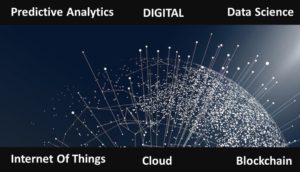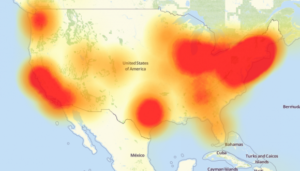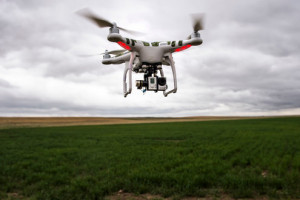The Internet of things (IoT) is the internetworking of physical devices, vehicles, connected devices and smart devises, buildings and other items, embedded with electronics, software, sensors, actuators, and network connectivity that enable these objects to collect and exchange data without requiring human-to-human or human-to-computer interaction.
The worldwide IOT market spend will grow from $592 billion in 2014 to $1.3 trillion in 2019 according to IDC, while the installed base of IoT endpoints will grow from 9.7 billion in 2014 to 30 billion in 2020 where 40% of all data in the world will be data resulting from machines to machines communication (M2M).
Gartner survey shows that 43 % of Organizations are using or plan to implement the Internet of things in 2016. Gartner predicts $2.5M per minute in IoT spending and 1M new IoT devices sold every hour by 2021.
Industrial IOT (Internet of Things) market is estimated at $60 trillion by 2030.
By 2020, IoT will save consumers and businesses $1 trillion a year in maintenance, services and consumables.
By 2022, a blockchain-based business will be worth $10B, Blockchain being a digital platform that records and verifies transactions in a tamper and revision-proof way that is public to all.
By 2018, Cloud Computing infrastructure and platforms are predicted to grow 30% annually. Many enterprises have failed to achieve success with cloud computing, because they failed to develop a cloud strategy linked to business outcomes. Many companies are unsure how to initiate their cloud projects. The key success factors for Cloud projects are the good design of the Business Processes, the focus on the Services delivered and a good design of the transition from “As Is” to “To Be” Applications Architecture.
By 2019, Global Business Intelligence market will exceed $ 23 billion and Global Predictive Analytics market will reach $ 3.6 billion by 2020, driven by the growing need to replace uncertainty in business forecasting with probability and the increasing popularity of prediction as a key towards improved decision making. Predictive analytics is the branch of the advanced analytics which is used to make predictions about unknown future events. Predictive analytics uses many techniques from data mining, statistics, modeling, machine learning, and artificial intelligence to analyze current data to make predictions about future. It is about the increased need & desire among businesses to gain greater value from their data. Over 80% of data/information that businesses generate and collect is unstructured or semi-structured data that need special treatment using Big Data Analytics.
Big Data investments will account for over $46 Billion in 2016 reaching $72 Billion by the end of 2020.
A new brand of analysts called “data scientists” are introducing data science courses into degrees ranging from computer science to business. Data Scientists usually require a mix of skills like mathematics, statistics, computer science, algorithmic, machine learning and most importantly business knowledge. If Data Scientists are lacking business knowledge, they will definitely fail. They also need to communicate the findings to C-Level management to be able to take the right strategic decisions.
Data science needs to be a fundamental component of any digital transformation effort.
All Sectors will have to hire and educate a significant number of Data Scientists.
Let’s take the example of the Energy Sector where the Digital Transformation is playing a crucial role to reach Global and European Energy targets:
87% of CFOs agree that growth requires faster data analysis and 50% of Networked enterprises are more likely to increase their market-share.
With the 2020 energy climate package and the 2050 energy roadmap, Europe has engaged early in the transformation of its Energy system.
As the Industrial Revolution was the transition to new manufacturing processes between 1760 and1840, the digital revolution will be the disruptive transformation of the 21st century to a new economy, a new society and a new era of low-emission energy.
Many large Energy players will appoint Chief Digital Officers to drive the digital transformation of their processes and create new businesses.
Four recommendations to boost Customer Centric Energy innovations will heavily require the Digital Transformation roadmap to be adopted:
- Accelerate Customer innovations by making the Data available for Market participants
- Build massive Energy Services as downloadable Apps through Energy Exchange Platforms B2B, B2C and C2C
- Full Customer participation by making customer usability as simple as one click
- Build the pan-European Energy Union of Customer Services by extending to cross-border Energy Management
With the enablement of IOT, BI, Predictive Analytics and Data Science and the proven business models, we predict that 90% of Commercial and Industrial Customers and 70% of Residential Customers will be adopting Smart Energy technologies by 2025.
Let me ask you the following questions:
- What are the Top 3 priorities that justifie Digital Transformation in your business?
- Are you planning to setup a Data Science team?
- Are you considering Digital for existing business improvement or for creating new businesses?











